Love Japanese food but not sure where to start? We have great news for you. All you really need is 6 condiments to start making your favorite Japanese food at home!
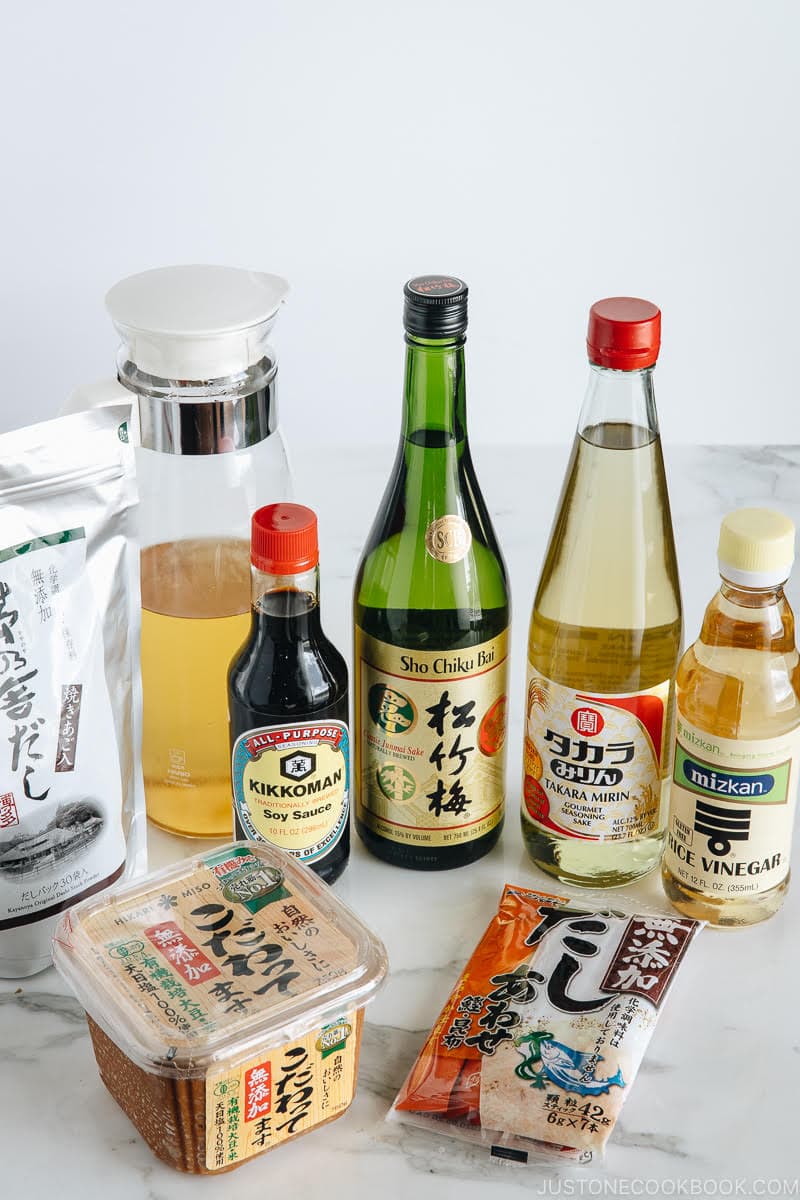
I have often heard that people are intimidated to cook their beloved Japanese dishes at home. There seems to be a misconception that cooking Japanese food is overly complicated, requiring obscure ingredients, long hours, and expert skills best left to the pros. Believe it or not, I am here to tell you that making flavorful and healthy Japanese food is easier than you think!
In this article, I’ll show you how to get started by building a basic Japanese pantry with these 6 must-have condiments. They are easily accessible and commonly used together in most Japanese recipes, enhancing the umami flavor that Japanese cuisine is known for.
With some background knowledge, cooking Japanese food is easily within your grasp. Ready? Let’s take a look!
Table of Contents
6 Must-Have Japanese Condiments in Your Pantry
Below you’ll find a brief introduction for each condiment. If you want to read more about it, click on the title or the picture. It will take you to a more comprehensive page on the uses, storage, recommended brands, substitutions, and more.
1. Soy Sauce
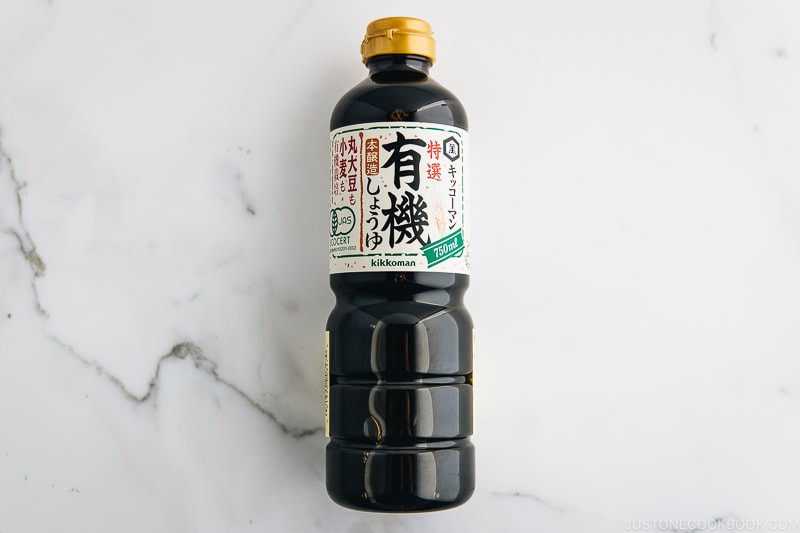
Soy sauce (also known as shoyu, 醤油) is the foundation of Japanese cooking. Made from soybeans, wheat, and salt, and fermented for several months, it serves as a key flavoring to season a dish. While soy sauce is salty, its primary role is to add a touch of savoriness, known as umami, to a dish. Salt, on the other hand, enhances the flavor of the ingredients, which is why you’ll often find us using both soy sauce and salt together in recipes.
Soy sauce comes in different strengths characterized by its aging process, thickness, and sodium level. Each brand of soy sauce has its own unique taste, so adjust the amount to suit your preference. In the US, you may also encounter tamari soy sauce marketed for consumers with gluten intolerance. It’s slightly thicker, richer, and darker than regular soy sauce, but you can use tamari as a substitute if you prefer.
Where to buy: Nowadays, soy sauce is as common as ketchup. You can find a wide variety of soy sauce in most grocery stores and online. There are also several options for gluten-free soy sauce available in the market.
2. Mirin (Japanese Sweet Rice Wine)
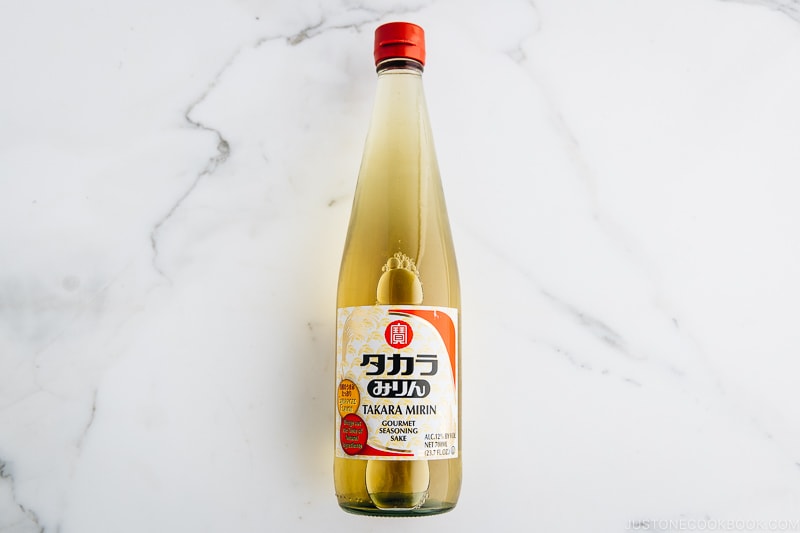
Mirin is a sweet, syrupy liquid used as a seasoning and glazing agent in Japanese cooking. It is also a type of rice wine, but with lower alcohol content. The key roles of mirin are to add luster, tenderize meat and seafood, and impart mild sweetness to dishes. It is an essential ingredient in making teriyaki dishes.
There are four types of mirin: hon mirin (authentic mirin), mirin, mirin-like condiment, and mirin-type condiment. I prefer using Hon Mirin from Japan because it makes a noticeable difference, although it can be difficult to find outside of Japan. As an alternative, I recommend Takara Mirin.
Substitute: You can substitute mirin with sake and sugar, although it won’t be exactly the same.
Where to buy: You can purchase mirin from Japanese grocery stores, Asian supermarkets, or Amazon.
3. Sake (Japanese Rice Wine)
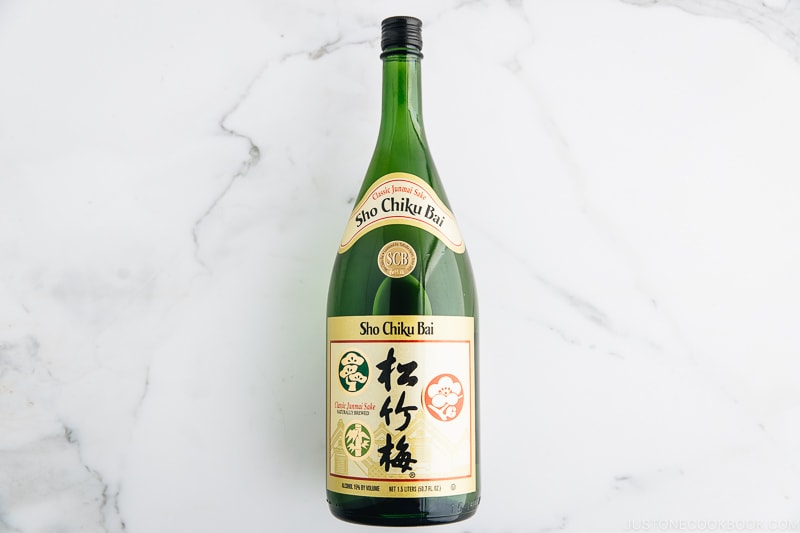
Japanese use sake for cooking, similar to how wine is used in Western cuisine. Pronounced as SAH-keh, sake is made from rice and water through a brewing process similar to beer. It is used as a marinade for meat and fish to tenderize them and remove their smell. Additionally, sake adds umami and a naturally sweet flavor to dishes. Compared to Chinese Shaoxing wine, sake is more delicate and mild, making it suitable for soups, sauces, and simmered dishes.
Substitute: If you can’t find sake or cooking sake, you can use dry sherry or Chinese rice wine as substitutes, but keep in mind that they have stronger flavors. If you prefer not to use alcohol in your cooking, you can simply omit sake or replace it with water or broth.
Where to buy: You can find inexpensive bottles ($5-8 shown above) at the alcohol section in Japanese or Asian grocery stores. Nowadays, WholeFoods Market and even Target also carry sake in their alcohol department. Some well-stocked liquor stores do carry sake as well.
Wait, what’s the difference between Sake and Mirin?
While sake and mirin are quite similar, there are subtle differences between the uses. Read this article to learn more.
4. Rice Vinegar
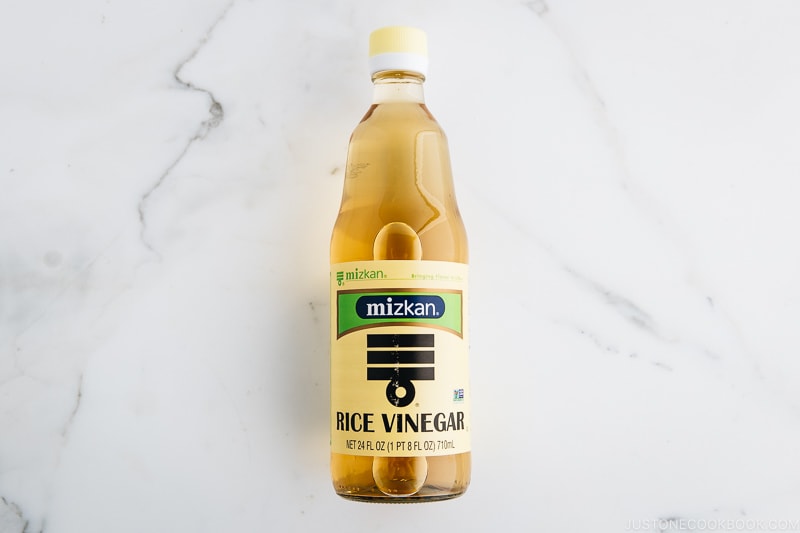
Made from rice, rice vinegar (米酢) is sweeter, milder, and less acidic than Western vinegar. It lends mild tangy, sour yet fruity notes to dishes. We use it to make sushi vinegar seasoning for sushi rice, in Japanese-style salads, pickles, and various sauces.
Where to buy: You can find rice vinegar in the Asian aisle of the majority of grocery stores.
5. Miso
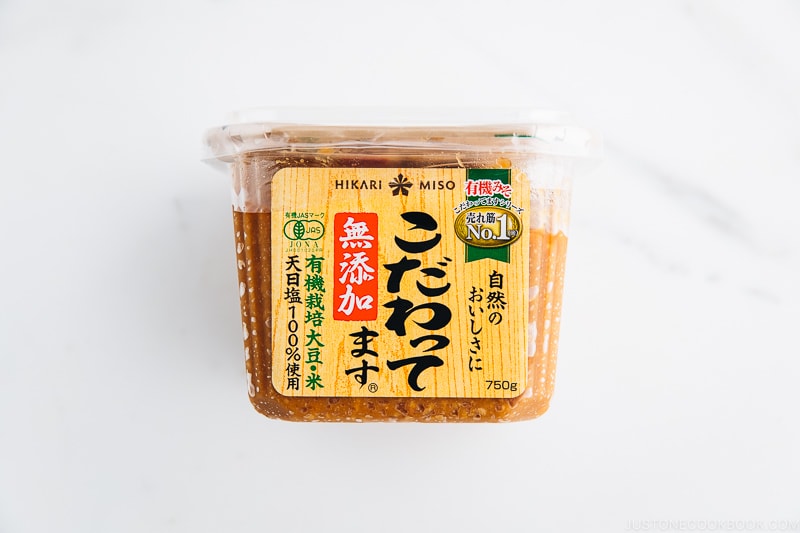
Miso (味噌), or fermented soybean paste, is made from soybeans, grains, salt, and koji culture. There are many different types of miso, broadly categorized by color: red, white, and yellow. Each type varies in taste, aroma, texture, and saltiness. If you are new to miso, start with yellow miso (also known as Awase miso) for its versatility. It can be used in a wide range of recipes to enhance flavor.
Where to buy: My favorite brand of miso is Hikari Miso, available at Japanese and Asian grocery stores or selected miso products on Amazon. Alternatively, look for miso brands that contain no MSG or other additives. You should be able to find some brands at Whole Foods, local co-ops, or well-stocked grocery stores in the refrigerated section.
6. Dashi (Japanese Soup Stock)
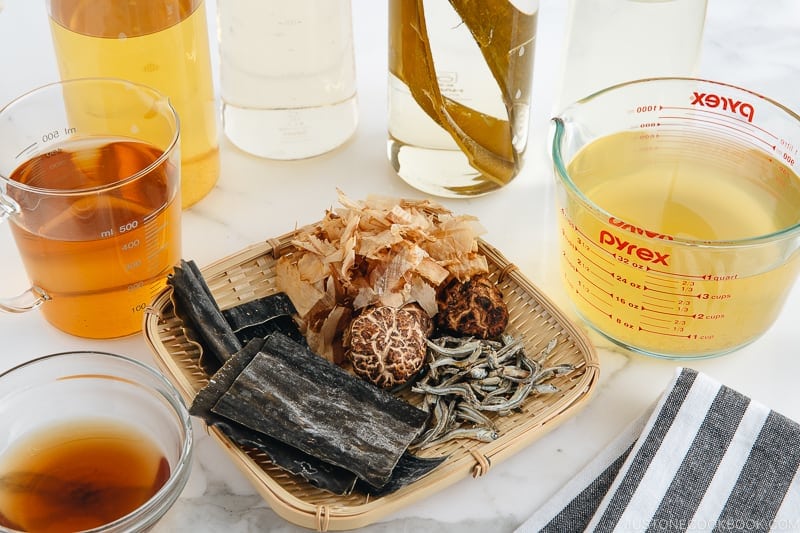
Dashi (だし, 出汁) is the quintessential soup stock used in many Japanese dishes, from miso soup to ramen to chawanmushi. Its uses in Japanese cuisine are unique and expansive, defining Japanese food with its delicate yet umami-packed flavor. In addition to being used as a broth base for Japanese hot pots, noodle soups, and simmered dishes, dashi is also used as a seasoning liquid or added to sauces. It can be used in any dish that requires a touch of liquid.
Another great thing about dashi? It is the easiest soup stock to make from scratch. You can choose different methods to prepare dashi, which I discuss in detail in the Ultimate Guide in Making Dashi.
For vegans and vegetarians, you can make dashi with kombu or a combination with shiitake mushrooms! Check out my Vegan Dashi recipe.
Popular Japanese Food Made with the 6 Must-Have Condiments
There you have it. With these 6 simple condiments in your pantry, you are literally set to cook up some of your favorite Japanese dishes at home!
Appetizers:
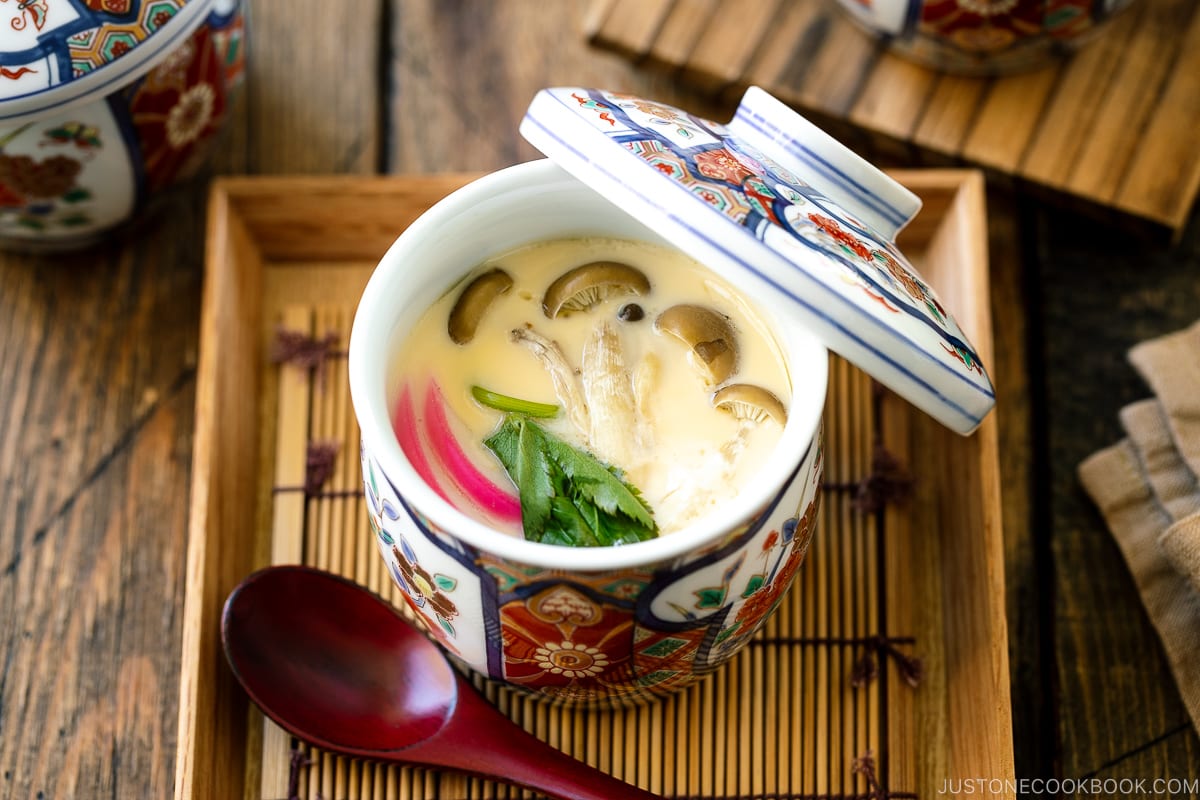
Salads:
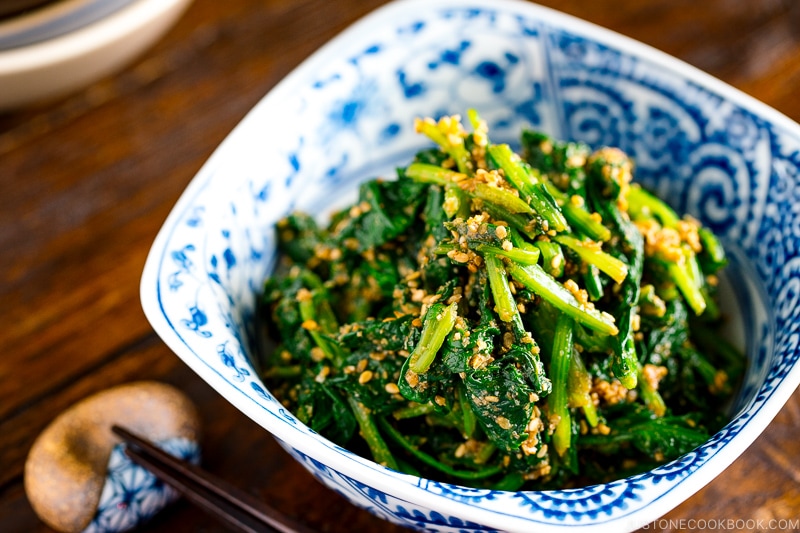
- Spinach Gomaae
- Wafu Salad Dressing (Japanese Salad Dressing)
- Salad with Carrot Ginger Dressing)
- Sunomono (Japanese Cucumber Salad)
- Soba Noodle Salad
Soups, Noodle Soup & Hot Pot
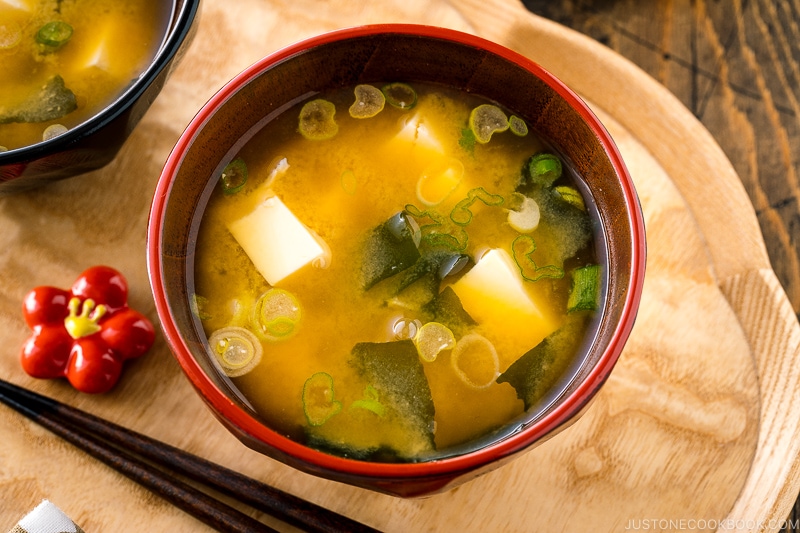
Main dishes:
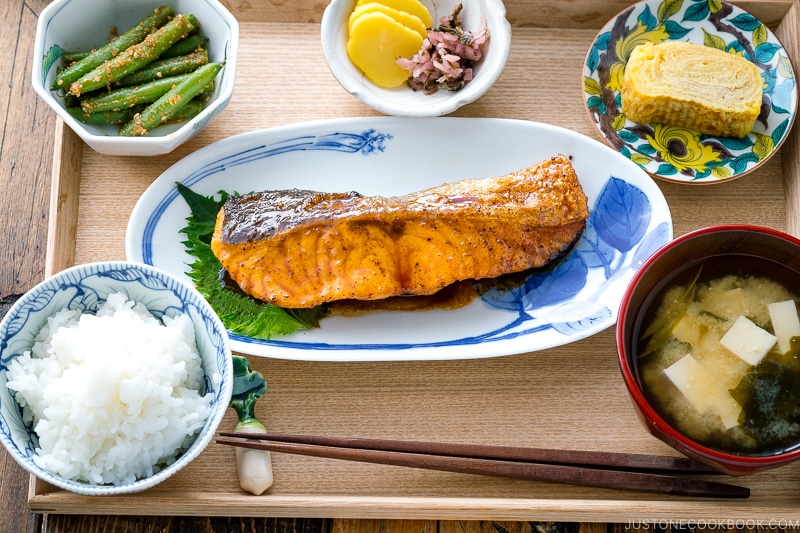
- Teriyaki Salmon
- Chicken Teriyaki
- Miso Butter Salmon
- Kakuni (Braised Pork Belly)
- Chicken Karaage
- Oyakodon
- Gyudon
- Nikujaga (Meat and Potato Stew)
Side dishes:
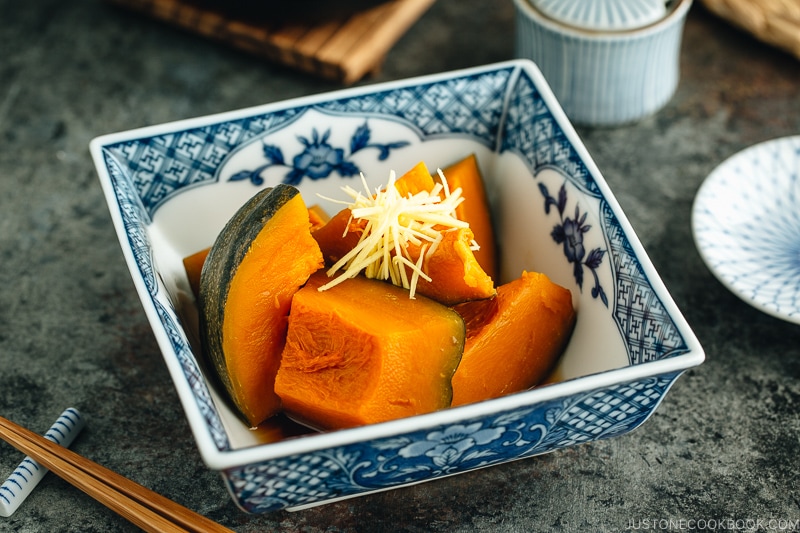
- Simmered Kabocha
- Tamagoyaki (Japanese Rolled Omelette)
- Spinach with Sesame Miso Sauce
- Takikomi Gohan (Mixed Rice)
More Resources for Japanese Cooking
- Local Japanese grocery stores around the world
- Everything you need to know about Japanese rice
- What is the difference between soba and udon noodles
- Essential Japanese Kitchen Tools
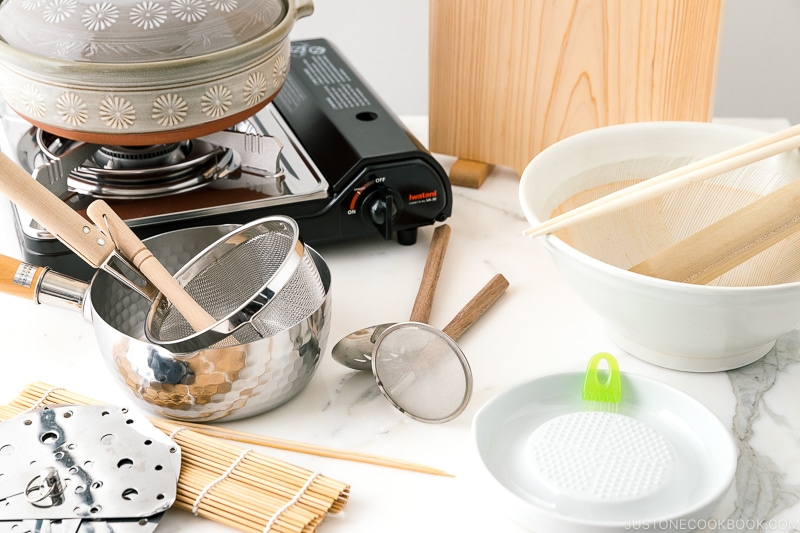



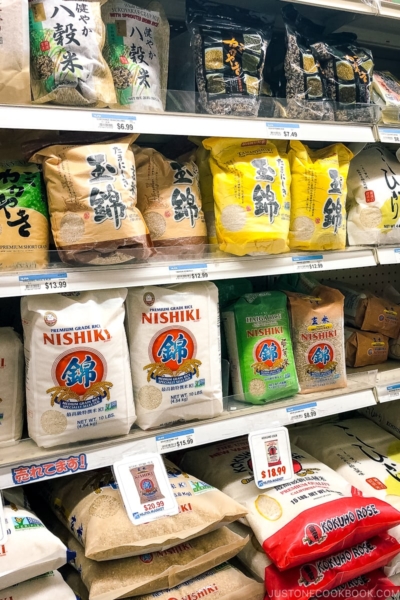




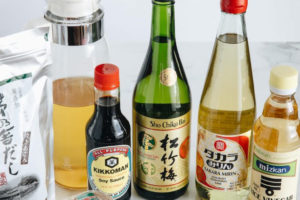
First day at lesson 1, and I love it ,so much informations. Very well organize, Thannk you for your hard work,France.
Hi, Francine! Welcome to Just One Cookbook! We are pleased to hear you enjoyed the content!
We hope you continue to enjoy our website and Nami’s delicious recipes as much as we do. Happy cooking!
I wanted to let you know that I love your website and your recipes! You’ve made my kids and I very excited about Japanese cooking during this pandemic while we are all at home together.
Hi Paula! Thank you so much for your kind feedback. I’m so happy to hear you enjoy cooking Japanese food at home! 🙂
I was nodding my head in agreement until I hit the Dashi. Oh, no! It’s been a nightmare finding good katsuobushi and kombu in my area and I am scared to buy something online that might turn out to be not so good. I’ve had similar issues with nori and wakame, and even Japanese green tea. Do you know of any good brands?
It’s unfortunate that we have to rely on getting the ingredients online. Japanese grocery stores may be hard to find in some states, but I know K-mart (Korean grocery store) has more stores throughout the US. They do carry Kombu (kelp) and some stores may carry bonito flakes (katsuobushi).
If you are not cooking Japanese food all the time, you may consider getting dashi powder, which is not a great taste, but at least makes the food more authentic Japanese taste than let’s say replacing it with chicken stock or beef stock.
Dashi is the only taste that makes it Japanese that no other cuisine uses. So to make it Japanese food, not other Asian food that uses similar soy sauce etc, you really need dashi…
I wasn’t an online shopper before as I love picking up and checking the product with my own eyes… but it’s very convenient once you start shopping (I use Amazon). 🙂
Hello miss Nami,
I would like to ask if the miso bean paste and the miso bean paste (korean bean paste: doenjang) is the same? Can i use it to make miso ramen? Where do you buy the chili bean paste? Is it the same as the korean (gochujang) one as well?
I live in Canada if you have any brand that are available here in Canada as well.
Hi Maria! No, they taste differently. I won’t recommend using doenjang for making miso ramen. Chili bean paste – Doubanjiang – is Chinese paste and not Korean gochujang. I think you can find Japanese miso brand like my favorite Hikari Miso and Tobanjiang in H-Mart.
Here are the links:
Miso: https://www.justonecookbook.com/miso/
Doubanjiang: https://www.justonecookbook.com/doubanjiang-chili-bean-paste/
Hope these pictures are helpful when you search.
Love you なみさん!
After living in US most of adult life and how appreciative your Japanese foods, travel and cultures postings to refresh my memories. 歳をとれば 心身共に 日本に帰ります。食べ物も 日本的なのがいつも 欲しくなります。
Thanking you deeply from one of your very senior old lady follower.
ひでこさん、優しいメッセージありがとう! I feel the same, and I can imagine this feeling gets stronger. I already feel like I prefer to eat simple Japanese food (grilled fish, miso soup, nimono, rice etc)… Luckily we go back to Japan every year but eventually, it will be harder to travel frequently. I’m happy to hear you enjoy our contents on the blog. Thank you for reading them. I hope to keep our contents as authentic as possible, too. Thanks for writing, and please stay in touch!
I love your recipes, instructions, and recommendations for ingredients. Also the short tours through some of Japan’s cultural highlights. These bring fond memories of my travel in Japan last April.
Hi Joan! Thank you for your kind words. I’m happy to hear you enjoy what we share on JOC! Hope you had a great trip last April. That must be a nice season to visit! Hope you could catch cherry blossom!
I love the “Kayanoya” dashi packets. After realizing how much msg was in Hondashi, I searched for many years…decades!… for good instant dashi. I did make dashi from scratch but was never satisfied with the results. Thanks you the JOC recommendation a few years ago, I can now easily have dashi for everything.
Hi Elaine! Yeah Kayanoya has such a great dashi flavor (but FYI they include salt – which we don’t include in our own dashi from scratch). They put Ago in the dashi – Ago is frying fish – which is caught in Kyushu region. It’s really delicious stuff in the packet! I’m glad we can now buy Kayanoya packages in Japanese market and Amazon. 🙂